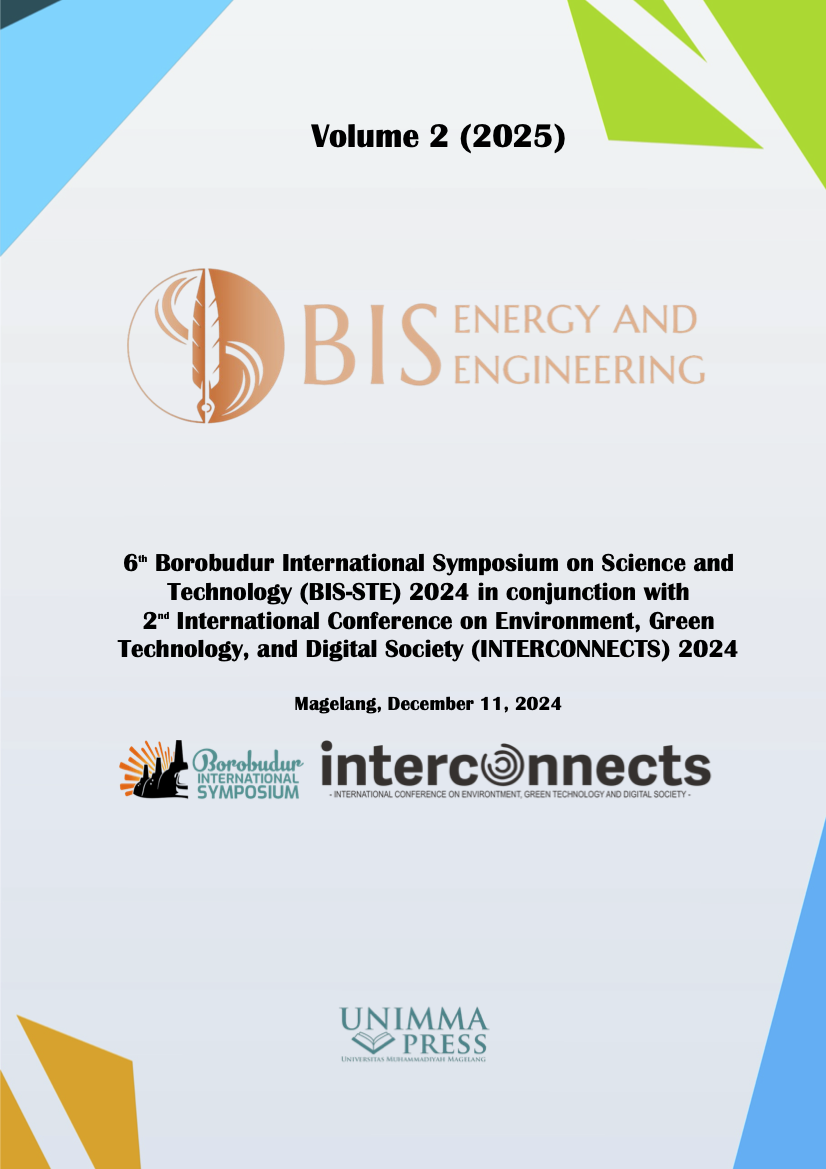The effect of magnetic rotor variations on motorcycle 4-step injection modification on engine performance as a potential application of bioethanol
Keywords:
Combustion engine, Bioethanol, Variations in fuel mixtureAbstract
Various innovations in technology continue to be developed to improve engine performance and optimize the combustion process in the combustion chamber. Perfect combustion can improve the performance of the engine, while also maximizing the ignition system by modifying the pulser magnetic pickup to increase the spark from the spark plug in the combustion chamber, so that the air and fuel mixture burns more efficiently and the combustion is more complete. This research aims to explore the effect of variations in the magnetic rotor on a 4-stroke injection motorbike on engine performance, especially in the application of bioethanol fuel. The rotors used in this research include standard rotors that have been issued by the manufacturer of the vehicle, and the use of rotors that are modified by increasing the length of the mold by 2 mm, and the rotor is shortened by 2 mm. The experimental method used in this research, and the results show that a fuel mixture with 30% Pertamax and 70% ethanol produces a torque of 8.15 N.m and can produce a power of 5.9 kW, which is produced by treating the rotor. In this research, torque and power increased better than using standard rotors.
References
[1] Amin, Bahrul & Ismet, Faisal. 2016. Teknologi Motor Bensin. Jakarta: Kencana
[2] Fraenkel, J.R, N.E Wallen & H.H Hyun. 2012. How To Design And Evaluate Research In Education. New York: McGraw-Hill Companies.
[3] Gunadi. 2010. “Pengaruh Waktu Pengapian (Ingnition Timing) Terhadap Emisi Gas Buang Pada Mobil Dengan Sistem Bahan Bakar Sistem Injeksi (EFI)”. Laporan Penelitian FT UNY. Hal 1-19254
[4] Huda, Syahrul, dkk. 2021. “The Effect of Turbo Cycle Instalation on 4 Stroke Motor Cycle on Fuel Consumption and Exhaust Emissions.” Journal of Mechanical, Electrical and Industrial Engineering. Volume 3 No 2: Halaman 69-76.257
[5] Jama, Jalius & Wagino. 2008. Teknik Sepeda Motor Jilid 2. Jakarta: Direktorat Pembinaan Sekolah Menengah Kejuruan.
[6] Maksum, Hasan., Reffles, & Purwanto, Wawan. 2012. Teknologi Motor Bakar. Padang: UNP Prees.
[7] Prasetiyo, Andriansyah. 2020. “Analisis Variasi Penggunaan Busi Pada Sepeda Motor Yamaha Vixion 2015 Terhadap Daya, Torsi Dan Emisi Gas Buang” Skripsi. UNP.
[8] Satibi, Loekman., Purnawan,Irfan., & Nazifah.Lisa. 2016. Mesin Penggerak Utama (Primer Mover) .Yogyakarta: Graha Ilmu.
[9] Peraturan Menteri Negara Lingkungan Hidup Nomor 05 Tahun 2006 tentang Ambang Batas Emisi Gas Buang Kendaraan Bermotor Lama267
[10] Sugiyono. 2012. Metode Penelitian Pendekatan Kuatitatif, Kualitatif, dan R&D. Bandung: Alfabeta.
[11] Surya, Busana Kusuma adhi. 2016. Modifikasi Sepeda Motor Sistem Karburator Menjadi Sistem Injeksi (Sistem Pengapian). Skripsi. Fakultas Teknik. Universitas Negeri Yogyakarta.
Syahrani, Awal. 2006. “Analisis Kinerja Mesin Berdasarkan Hasil Uji Emisi”. Jurnal SMARTEK. Vol 4. Hal 260-266.
Downloads
Published
Conference Proceedings Volume
Section
License

This work is licensed under a Creative Commons Attribution-NonCommercial 4.0 International License.

